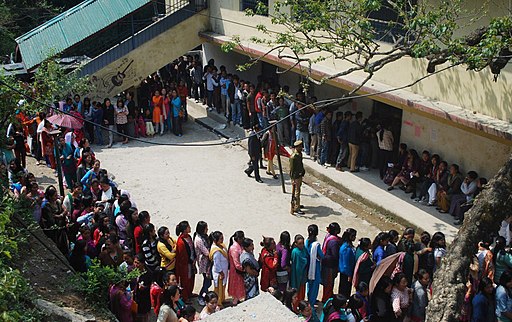

India, the world’s largest democracy, is approaching elections in less than a month. With this in mind, it is worthwhile appraising the new findings shining a light on the role of democracy in better health. The study observes a particular connection between democracy and reduced deaths from noncommunicable diseases in 170 countries, including India.
Compared to more autocratic regimes, the study associates democracy with a 22 percent reduction in mortality due to cardiovascular diseases, compared to a twelve percent reduction associable with a nation’s GDP growth. A ten percent reduction in cancer deaths can be linked to democracy, compared to six percent linked to GDP, and a six percent reduction in deaths from cirrhosis of the liver can be linked to democracy, compared to two percent linked to GDP.
Other benefits include reduced mortality due to road injuries, with an eighteen percent reduction linked to democracy versus seven percent linked to GDP. An outlier when it comes to NCDs is diabetes, with the study suggesting there is little to no causal link between democracy and a reduction in diabetes mortality.
“Countries governed by accountable democratic institutions are more likely to invest in health to improve outcomes for the population, owing to pressure at the polls. However, in India…it may be difficult to see this link.”
The reasoning behind the findings is that countries governed by accountable democratic institutions are more likely to invest in health to improve outcomes for the population, owing to pressure at the polls. However, in India – a country with chronic levels of underspending by the government on healthcare – it may be difficult to see this link. This is probably because healthcare is not considered a poll subject in India.
As Dr Amir Ullah Khan – former policy advisor, Bills and Melinda Gates Foundation and Professor, MCRHRDI, Government of Telangana – told Health Issues India, “Health is not an important political subject. People do not vote in or vote out a government on the basis of health.”
This could be considered the reason behind dismal healthcare spending in India, it has regularly hovered at a little over the one percent mark for several years. India’s health spending as of the 2017-18 period equates to 1.4 percent of its GDP, an increase of 0.2% since 2013-14. While an increase, this nonetheless falls short of the global average of 3.5 percent of GDP being spent by governments on health in 2015.

“Elsewhere…democracy could be fuelling increased prioritisation of health by the Centre. Nowhere is this more apparent than Ayushman Bharat, the BJP government’s blockbuster attempt at healthcare reform”
The National Health Policy, 2017 outlined a commitment to increasing public health expenditure to 2.5 percent of GDP by 2025. This is despite a target of increasing spending to two percent of GDP still being unmet – even though that target was set in 2002. Meanwhile, this year’s Union Budget poised India to increase the amount demarcated for the health budget by just eleven percent – falling short of the 33 percent budgetary increase the Union Health Ministry requested.
Elsewhere, however, democracy could be fuelling increased prioritisation of health by the Centre. Nowhere is this more apparent than Ayushman Bharat, the BJP government’s blockbuster attempt at healthcare reform which seeks to expand health insurance coverage to 10.74 crore economically vulnerable Indians. The scheme, though controversial, has won plaudits from international observers and is said to have benefited 700,000 Indians in its first six months.
“With elections impending, health is an issue that should be an integral part of the agenda when it comes to evaluating parties’ manifestos and deciding which party offers the best deal for India”
Other health-related initiatives include the Swachh Bharat (‘Clean India’) Mission, which aims to improve sanitation coverage and make India free of open defecation by October this year. While there are disputes over figures, it is broadly agreed that the scheme has benefited health, cut rates of open defecation and expanded access to toilet facilities among rural households. According to the 2018-19 National Rural Sanitation Survey, 93.1 percent of rural households now have access to toilets. The World Health Organization (WHO) credits Swachh Bharat with preventing 180,000 deaths from diarrhoeal disease since its launch.
With elections impending, health is an issue that should be an integral part of the agenda when it comes to evaluating parties’ manifestos and deciding which party offers the best deal for India. However, the responsibilities of the electorate go beyond ensuring the parties offer a commitment to health while on the campaign trail. They must also commit to improving India’s health if elected to office. The power of democracy is that politicians are held to account. As the Lancet research shows, the benefits to health from this are significant.

